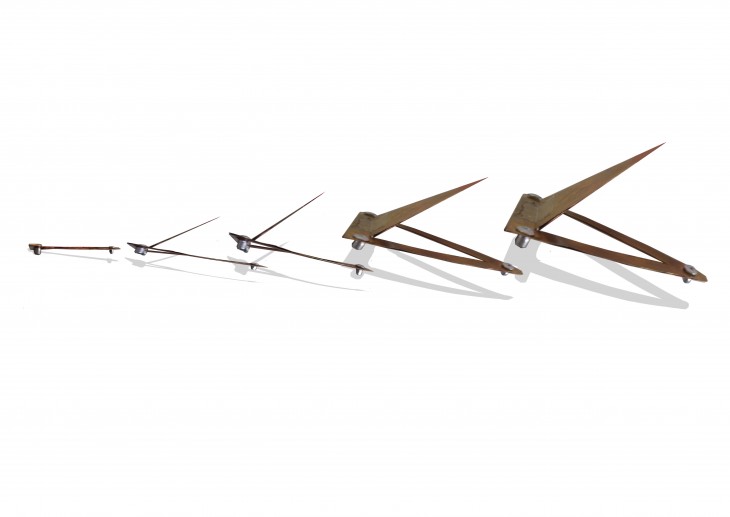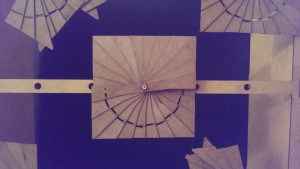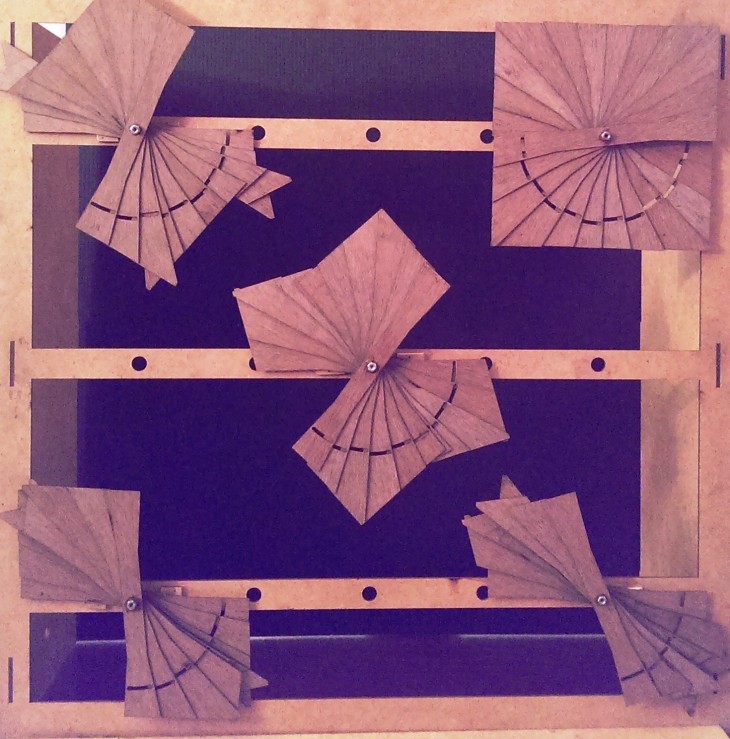The whole study revolves around the fact that metal expands on heating and contracts on cooling and those different metals have their own unique thermal coefficients of expansions.
Thesis Project
It was divided into various parameters that would define the bimetal that would be the best used to make the prototype.
Parameters that affect would include: The metals used (m), The profile, Length (l), Width, Thickness Method of joinary
Parameters the above would be weighed against would include: Time (t), Temperature (T), Displacement / Curvature (d)
Material Research
Thickness and metals used
Brass (B)
Stainless Steel (S)
Copper (C)
These were tested in different thicknesses of 0.5, 0.2, 0.1 and it was understood that the thinner the material the more the deflection.
Material length
Test 1: 300cmm metal strip
Test 2: 70 mm metal strip
Test 3: 100 mm metal strip
Result: The 300mm bimetallic strip doesn’t show any significant movement; temperature range was from 80°C to 110°C. The 70mm strip shows significant deflection in 3sec and returned to its rest stage in 10sec.; temperature range was from 80°C to 110°C. The 100mm strip shows significant deflection in 3sec and returned to its rest stage in 10sec.; temperature range was from 80°C to 110°C.
Conclusion: The 300mm strip due to its length was not able to show significant bending that could be visually appreciated. The 70mm bimetallic strip deflects by 5mm in the anticipated direction. The 100mm bimetallic strip deflects by 5mm in the anticipated direction.
Profile
Coil versus earlier mentioned linear profile.
Result: The coil begins to unwind as soon as the temperature increases; temperature range was from 30°C to 68°C. Time to unwind: 2 seconds. Time to recoil: 34 seconds. Initial distance 1mm. Final distance 3mm.
Application
Based on the test conducted above the next steps involved are focused on how to translate theses smaller movement into much more larger and enhanced movements.
Also the system of materials that would be involved was considered as it can be derived from our previous tests the weight that the bimetal can carry is limited. Thus numerous secondary materials were tested in order to produce a combination of elements that would work in coordination with each other.
Geometry
Various geometries and systems were tested to understand the various control point staht would be generated, temperatures reuqired and also the movement generated.
Prototype
The prototype proposed here is that of a façade that can be controlled and regulated by the atmosphere as well as by artificial means to perform the function of opening and closing as per the required stimuli. Hence, each point of the façade can be controlled individually that would help evolve and transform the final form or structure of the same. Although, each element would have its own individual behavior, which in this case would be their reaction to the amount of heat that each of the bimetals would receive, they would collectively form the complete façade.
The future of this module has great architectural potential not only in terms of facades but also as structural elements in systems where much larger loads could be moved. The bimetals future need not be restricted to the open and close mechanism as proposed in our system but the mechanism could also lift objects and place them back, move other structures and much more as shown in the various tests conducted by us.
the further progress of this project can be seen in phase 2 :
(http://legacy.iaacblog.com/maa2013-2014-digital-matter-intelligent-constructions/2014/06/thermatrix_bimetals-phase-2/)


























